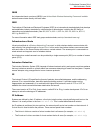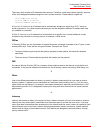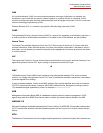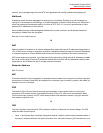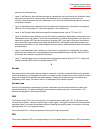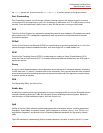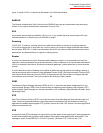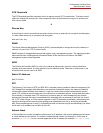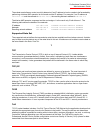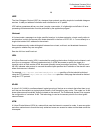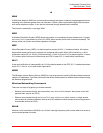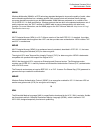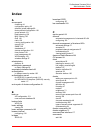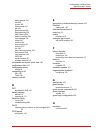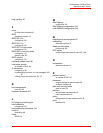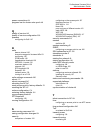
Professional Access Point
Administrator Guide
Glossary - 319
The subnet mask allows a router to quickly determine if an IP address is local or needs to be forwarded by
performing a bitwise AND operation on the mask and the IP address. For example, if an IP address is
192.168.2.128
and the netmask is
255.255.255.0
, the resulting Network address is
192.168.2.0
.
The bitwise AND operator compares two bits and assigns 1 to the result only if both bits are 1. The
following table shows the details of the netmask:
Supported Rate Set
The supported rate set defines the transmission rates that are available on this wireless network. A station
may be able to receive data at any of the rates listed in this set. All stations must be able to receive data at
the rates listed in the Basic Rate Set.
T
TCP
The Transmission Control Protocol (TCP) is built on top of Internet Protocol (IP). It adds reliable
communication (guarantees delivery of data), flow-control, multiplexing (more than one simultaneous
connection), and connection-oriented transmission (requires the receiver of a packet to acknowledge
receipt to the sender). It also guarantees that packets will be delivered in the same order in which they
were sent.
TCP/IP
The Internet and most local area networks are defined by a group of protocols. The most important of
these is the Transmission Control Protocol over Internet Protocol (TCP/IP), the de facto standard
protocols. TCP/IP was originally developed by Defense Advanced Research Projects Agency (DARPA,
also known as ARPA, an agency of the US Department of Defense).
Although TCP and IP are two specific protocols, TCP/IP is often used to refer to the entire protocol suite
based upon these, including ICMP, ARP, UDP, and others, as well as applications that run upon these
protocols, such as telnet, FTP, etc.
TKIP
The Temporal Key Integrity Protocol (TKIP) provides an extended 48-bit initialization vector, per-packet
key construction and distribution, a Message Integrity Code (MIC, sometimes called "Michael"), and a
rekeying mechanism. It uses a RC4 stream cipher to encrypt the frame body and CRC of each 802.11
frame before transmission. It is an important component of the WPA and 802.11i security mechanisms.
ToS
TCP/IP packet headers include a 3-to-5 bit Type of Service (ToS) field set by the application developer that
indicates the appropriate type of service for the data in the packet. The way the bits are set determines
whether the packet is queued for sending with minimum delay, maximum throughput, low cost, or mid-way
"best-effort" settings depending upon the requirements of the data. The ToS field is used by the
Professional Access Point to provide configuration control over Quality of Service (QoS) queues for data
transmitted from the access point to client stations.
IP address
192.168.2.128 11000000 10101000 00000010 10000000
Netmask
255.255.255.0 11111111 11111111 11111111 00000000
Resulting network address
192.168.2.0 11000000 10101000 00000010 00000000



